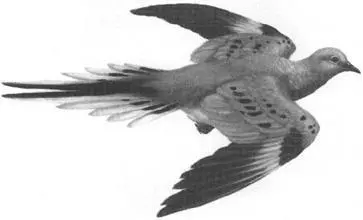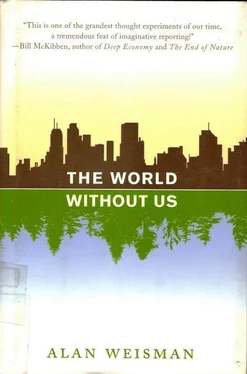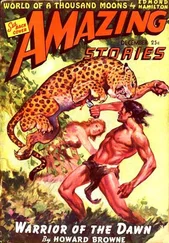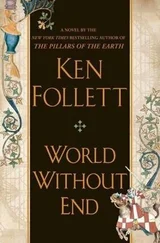Until, that is, the two Koreas—together nearly 100 million humans on a peninsula the size of Utah—finally topple under the weight of their resident Homo population. If, however, people simply vanish first, even though the DMZ may be too marginal to sustain Siberian tigers, “a few,” muses Wilson, “still prowl the mountains of the North Korean-Chinese borderlands.” His voice warms as he envisions them multiplying and fanning across Asia while lions work their way up southern Europe.
“Pretty quickly there would be a tremendous spread of remaining megafauna,” he continues. “Especially the carnivores. They’d make short work of our livestock. After a couple hundred years, few domestic animals would remain. Dogs would go feral, but they wouldn’t last long: they’d never be able to compete. There would be a huge shakeout involving species introduced wherever there’s been human disturbance.”
In fact, bets E. O. Wilson, all human attempts to improve on nature, such as our painstakingly bred horses, would revert to their origins. “If horses even survived, they would devolve back to Przewalski’s horse”—the only true wild horse remaining, of the Mongolian steppes.
“The plants, crops, and animal species man has wrought by his own hand would be wiped out in a century or two. Many others would also be gone, but there would still be birds and mammals. They’d just be smaller. The world would mostly look as it did before humanity came along. Like a wilderness.”
CHAPTER 14

Wings Without Us
AT THE WESTERN end of the Korean DMZ, on a mud-pancake island in the Han River estuary, nests one of the rarest large birds of all: the black-faced spoonbill. Only 1,000 remain on Earth. North Korean ornithologists have clandestinely warned colleagues across the river that their hungry comrade citizens swim out to poach spoonbill eggs. The South Korean hunting ban is no help, either, to geese that land north of the DMZ. Nor do cranes there banquet on rice kernels spilled by mechanized harvesters. The reaping in North Korea is all by hand, and people take even the smallest grains. Nothing is left for birds.
In a world without humans, what will be left for birds? What will be left of birds? Of the more than 10,000 species that have coexisted with us, ranging from hummingbirds that weigh less than a penny to 600-pound wingless moas, about 130 have disappeared. That is barely more than 1 percent, almost an encouraging figure if some of these losses hadn’t been so sensational. Moas stood 10 feet tall and weighed twice as much as an African ostrich. They were extinguished within two centuries by Polynesians who sometime around AD 1300 colonized the last major planetary landmass that humans discovered, New Zealand. By the time Europeans appeared some 350 years later, piles of big bird bones and Maori legends were all that remained.
Other massacred, flightless birds include the dodo of the Indian Ocean’s Mauritius Island, famously clubbed and cooked to death within a hundred years by Portuguese sailors and Dutch settlers it never learned to fear. Because the penguin-like great auk’s range stretched across the upper Northern Hemisphere, it took longer, but hunters from Scandinavia to Canada managed to exterminate them anyhow. The moa-nalo—flightless, oversized ducks that ate leaves—went extinct long ago in Hawaii; we know little about them, other than who killed them.
The most stunning avicide of all, just a century ago, is still hard to fathom in its enormity. Like hearing astronomers explain the entire universe, its lesson gets lost because its subject, when it was alive, literally exceeded our horizons. The postmortem of the American passenger pigeon is so fertile with portents that just a brief glance warns—screams, in fact—that anything we consider limitless probably isn’t.
Long before we had poultry factories to mass-produce chicken breasts by the billion, nature did much the same for us in the form of the North American passenger pigeon. By anyone’s estimate, it was the most abundant bird on Earth. Its flocks, 300 miles long and numbering in the billions, spanned horizons fore and aft, actually darkening the sky. Hours could go by, and it was as though they hadn’t passed at all, because they kept coming. Larger, far more striking than the ignoble pigeons that soil our sidewalks and statuary, these were dusky blue, rose breasted, and apparently delicious.
They ate unimaginable quantities of acorns, beechnuts, and berries. One of the ways we slew them was by cutting their food supply, as we sheared forests from the eastern plains of the United States to plant our own food. The other was with shotguns, spraying lead pellets that could down dozens with a single blast. After 1850, with most of the heartland forest gone to farms, hunting passenger pigeons was even easier, as millions of them roosted together in the remaining trees. Boxcars stuffed with them arrived daily in New York and Boston. When it finally became apparent that their unthinkable numbers were actually dropping, a kind of madness drove hunters to slaughter them even faster while they were still there to kill. By 1900, it was over. A miserable few remained caged in a Cincinnati zoo, and by the time zookeepers realized what they had, nothing could be done. The last one died before their eyes in 1914.
In succeeding years, the parable of the passenger pigeon was retold often, but its moral could only be heeded in part. A conservation movement founded by hunters themselves, Ducks Unlimited, has bought millions of acres of marshland to insure that no game species they value will be without places to land and breed. However, in a century in which humans proved more inventive than during the rest of Homo sapiens history combined, protecting life on the wing became more complicated than simply making game-bird hunting sustainable.

Passenger pigeon. Ectopistes migratorius .
ILLUSTRATION BY PHYLLIS SAROFF.
The Lapland longspur isn’t commonly known to North Americans, because its behavior isn’t quite what we expect from migratory birds. Its summer and breeding grounds are in the high Arctic, so just as more familiar songbirds head toward the equator and beyond, Lapland longspurs arrive to spend the winter in the great plains of Canada and the United States.
They’re pretty little black-faced, finch-sized birds with white half masks and russet patches on their wings and nape, but we mostly see them at a distance: hundreds of indistinct, small birds swirling in the winter prairie wind, picking over fields. On the morning of January 23, 1998, however, they were easy to see in Syracuse, Kansas, because nearly 10,000 were lying frozen on the ground. During a storm the previous evening, a flock crashed into a cluster of radio-transmission towers. In the fog and blowing snow, the only things visible were red, blinking lights, and the longspurs apparently headed for them.
Neither the circumstances nor the numbers of their deaths were particularly unusual, although the toll for a single evening was possibly high. Reports of dead birds heaped around the bases of TV antennae started getting ornithologists’ attention in the 1950s. By the 1980s, estimates of 2,500 deaths per tower, per year, were appearing.
In 2000, the U.S. Fish and Wildlife Service reported that 77,000 towers were higher than 199 feet, which meant that they were required to have warning lights for aircraft. If calculations were correct, that meant that nearly 200 million birds collided fatally with towers each year in the United States alone. In fact, those figures had already been usurped, because cell phone towers were being erected so fast. By 2005, there were 175,000 of those. Their addition would raise the annual toll to half a billion dead birds—except that this number was still based on scant data and on guesses, because scavengers get to most feathered victims before they’re found.
Читать дальше













